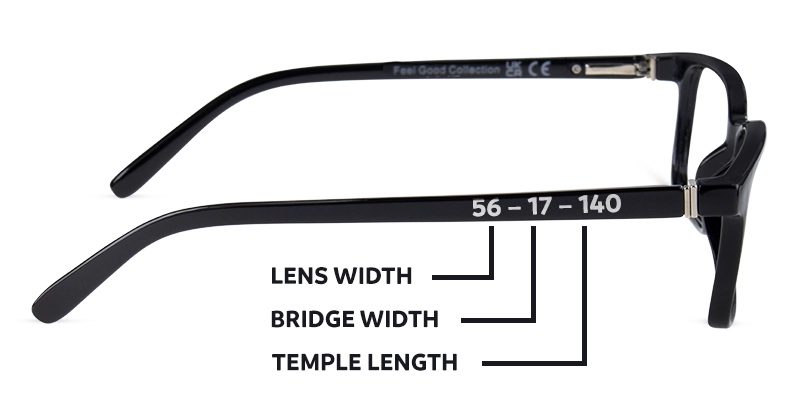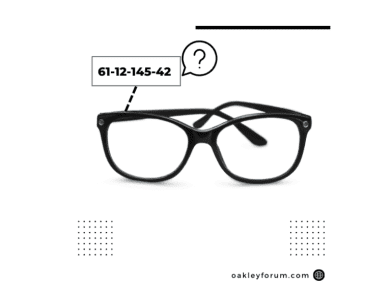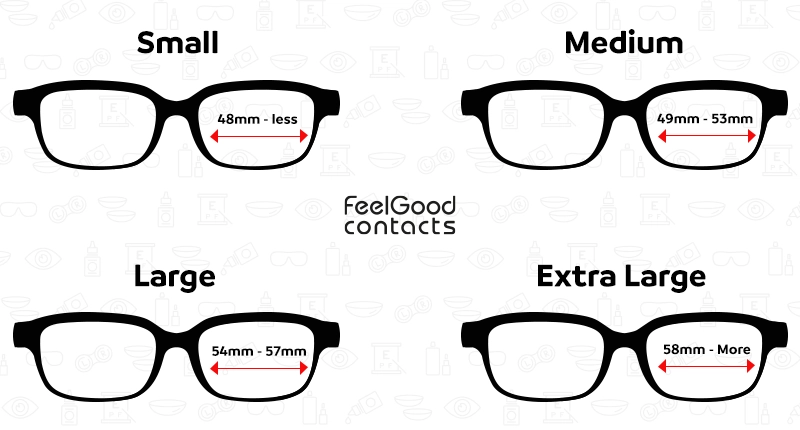Are you tired of guessing if a pair of sunglasses will fit you right? Those small numbers printed on the inside of the frame hold the secret to finding sunglasses that feel custom-made for your face.
Learning how to read sunglasses measurements can save you from uncomfortable fits and endless returns. In this guide, you’ll discover what each number means—from lens width to temple length—and how to use them to pick the perfect pair that stays comfortable all day.
Keep reading to unlock the simple steps that will help you shop smarter and look sharper with every pair of shades you wear.
Sunglasses Measurement Basics
Lens widthshows how wide one lens is, measured in millimeters. It is the horizontal size at the widest part of the lens. This number helps you know how big or small the lenses are.
Bridge widthis the space between the two lenses. It is the part of the frame that rests on your nose. A good fit here means the sunglasses will sit comfortably without pinching.
Temple lengthmeasures the arms of the sunglasses. It starts at the frame hinge and ends behind your ear. This length affects how well the glasses stay on your face.
Knowing these three numbers helps you pick sunglasses that fit well. Proper fit means better comfort and less slipping during use.

Credit: www.reddit.com
Tools For Measuring Sunglasses
Use a rulermarked in millimetersfor accurate sunglasses measurement. Place the sunglasses flat on a surface. Measure each part precisely without gaps.
Start with the lens width: measure the widest part of one lens horizontally. Next, measure the bridge width, the space between lenses. Finally, measure the temple length, from the hinge to the end tip behind the ear.
Millimeters give exact numbers to compare different sunglasses. This method helps in finding a pair that fits well and feels comfortable.
Measuring Your Face
Measure the temple to temple distanceto know the width of your face. Use a ruler or tape to measure from one side of your head to the other, right above the ears. This helps in choosing sunglasses that fit well and do not feel tight.
The bridge width on noseis the space between the two lenses. It must fit your nose comfortably. Too wide, and the sunglasses will slide down; too narrow, and they will pinch your nose.
Measure the bridge length to jawto understand how the sunglasses will sit on your face. This helps in picking frames that follow your face shape and do not press too hard on your cheeks or jawline.
Measuring Your Current Sunglasses
Start by measuring the Lens Width. This is the horizontal width of one lens at its widest part. Use a ruler or tape measure for accuracy.
Next, check the Bridge Width. Measure the space between the lenses where the sunglasses rest on your nose. This ensures comfort and proper fit.
Finally, measure the Temple Length. This is the length of the arm that goes behind your ear. Measure from the hinge to the tip of the temple.
Knowing these three measurements helps you pick sunglasses that fit well and feel good all day long.
Interpreting Sunglasses Numbers
Sunglasses measurementsare usually shown as three numbers. These numbers tell you about the size and fitof the sunglasses. The first number is the lens width. It shows how wide one lens is from side to side. The second number is the bridge width. It tells the space between the two lenses, which rests on your nose. The last number is the temple length. It measures the arm of the glasses from the frame hinge to the end that sits behind your ear.
Knowing these numbers helps you pick sunglasses that fit well. Well-fitting sunglasses feel comfortable and stay on your face. Sunglasses that are too big or too small may slip or press too hard. These numbers make choosing the right pair easier.

Credit: www.feelgoodcontacts.com
Choosing The Right Fit
Using size guideshelps pick sunglasses that fit well. These guides show lens width, bridge width, and temple length. Knowing these numbers makes choosing easier and more accurate.
Trying sunglasses on is important. They should feel comfortableand not pinch your nose or ears. Move your head to check if they stay in place. Comfort is just as key as style.
Balance style and comfortby choosing frames that suit your face shape and size. Pick colors and shapes you like, but never ignore how they feel. Sunglasses should look good and feel great all day long.

Credit: www.oakleyforum.com
Frequently Asked Questions
What Do Sunglass Size Numbers Mean?
Sunglass size numbers represent frame dimensions in millimeters. Lens width is the horizontal lens size. Bridge width measures the nose gap. Temple length is the arm length behind the ear. These numbers help ensure a comfortable, proper fit.
How Is Sunglass Size Measured?
Sunglass size is measured using three dimensions in millimeters: lens width, bridge width, and temple length. Lens width measures one lens’s horizontal size. Bridge width is the distance between lenses over the nose. Temple length measures the arm from hinge to ear tip.
What Do 55mm Sunglasses Mean?
55mm sunglasses indicate the lens width, measuring the horizontal size of one lens in millimeters. This helps ensure a proper fit.
What Do 52mm Sunglasses Mean?
52mm sunglasses indicate the lens width, measuring the horizontal size of one lens at its widest point.
Conclusion
Understanding sunglass measurements helps you pick the right fit easily. Lens width, bridge size, and temple length matter most. Use a ruler to measure your current glasses or face. Correct sizing ensures comfort and better protection from the sun. Keep these simple tips in mind when shopping for sunglasses.
Choosing well-measured sunglasses improves your style and eye safety. Small details make a big difference in fit and feel. Now, reading sunglasses numbers won’t feel confusing anymore.

Marry Christin, a passionate fashion designer and style enthusiast. Fashion isn’t just my profession—it’s my addiction! Along with my expert team, I bring you honest reviews of the latest fashion trends, including shoes, boots, sandals, dresses, and more.

